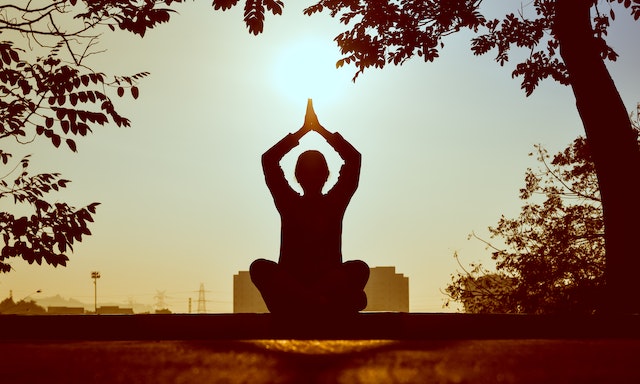
Yoga originated in India and is an alternative approach to health that aims to balance the body and mind. The practice involves various physical postures, breathing exercises, and mental concentration. Yoga awakens your inner potential and helps you find peace and tranquility. It has many benefits, including for your physical health. Here are three ways how yoga affects your physical health:
Strength
You can take a physical yoga class. But, in the 21st century, an online yoga class is more convenient. Many people who have never done yoga believe its main benefit is for your mind and spirit. Yet, a yoga lesson also focuses on poses that promote muscle strength and flexibility. Each pose trains a different set of muscles and strengthens them over time.
For example, Vrikshasana or Tree Pose is a strength-building yoga pose.
Tree Pose
1. Stand tall with your shoulders relaxed and away from your ears.
2. Starting with the left leg standing, press the sole of your right foot on the calf or the inner thigh of your left leg. Do not place your foot on your knee.
3. To help you balance, pick a spot in front of you and focus on it.
4. Try holding the pose for one minute.
5. Repeat the process with the other right leg standing.
6. Be sure you breathe throughout the pose.
You can do daily tasks with greater ease and less physical strain when your muscles are strong. Yoga also trains your body to endure physical discomfort and pain. You stretch and compress specific body parts in each yoga pose. This builds up resistance over time. Some people train with weights as well as take part in yoga. Yoga helps to reduce the effort needed to get results.
Build strength and flexibility with yoga. The practice helps you get a healthy core and stay strong as you age.
Flexibility
Increased flexibility is one of the many benefits of yoga. Yoga helps you strengthen and increase the range of motion in your limbs, joints, and spine. The more flexible a person becomes, the better their self-image often becomes.
Adho Mukha Svanasana, or Downward Facing Dog, is an example of a good pose for flexibility.
Downward Facing Dog
1. Get on your hands and knees.
2. Tuck your toes.
3. Lift your bottom until your hands and legs are straight.
4. Try to lower your feet as close to the floor as possible.
5. Pedal your feet, holding each lower pedal for a few seconds each time.
6. Don’t hold your breath. Make sure you are breathing throughout the exercise.
Not everyone who practices yoga can achieve all their flexibility goals. Some people are more flexible than others. But sticking to a steady practice of yoga will increase flexibility over time.
Heart Health
Yoga helps keep your blood pressure and heart rate under control. It improves diastolic blood pressure, pulse rate, and heart rate variability. It also improves blood cholesterol levels and inflammation in the cardiovascular system.
Many yoga poses are great for heart health. One of them is Ardha Matsyendrasana or Half Spinal Twist pose.
Half Spinal Twist
1. Sit on the floor with your legs extended in front of you on the floor.
2. Raise your left leg and bend it over your right leg, placing your left foot as close to your right hip as possible
3. With your left hand on the floor behind you, place your right hand on your left thigh as you twist to face the left. Twist as far as you can to look over your left shoulder. Keep your spine straight as you turn, and be sure to breathe.
4. Hold the pose for a count of 5. Make sure to breathe.
5. Repeat on the other side.
Inflexible muscles can increase blood pressure, heart rate, and stress. As a result, stiff people are at a higher risk of heart disease than flexible people. Also, poor posture caused by tight muscles can strain the heart. Yoga keeps your muscles loose and prevents any stress on your cardiovascular system.
Yoga can improve strength, flexibility, and heart health. Try to practice yoga at least three to five times per week.


